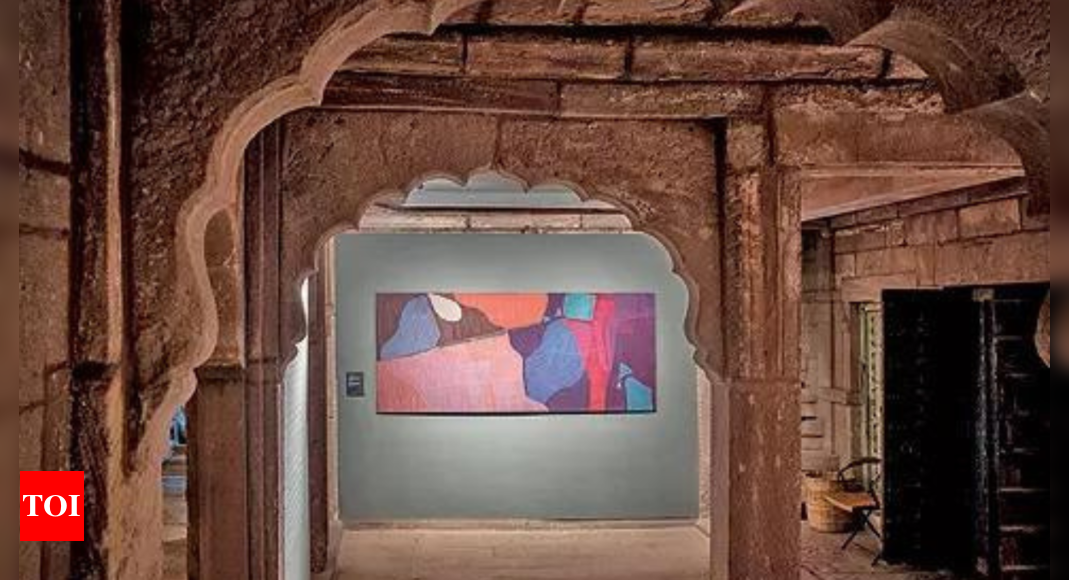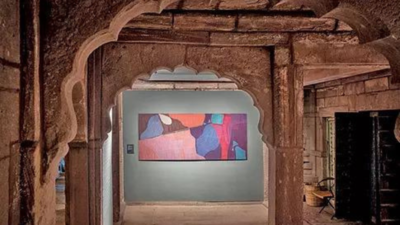On a typical afternoon at Jodhpur’s Toorji ka Jhalra, an ancient stepwell within the walled part of the old city, one can spot local teens flinging themselves off its intricately carved ledges before vanishing into the cool, green water below only to surface seconds later, grinning. A few steps away, a photographer trains his camera on a young couple against its ancient carvings while a weary tourist lounges on another step with his headphones on.
Delhi Election Results 2025
Nearby, a sarangi player keeps passersby entertained with familiar Rajasthani folk tunes appropriated by Bollywood.
Watching them, it’s almost impossible to believe that this 18th-century relic was a dumping ground, buried under decades of stagnant water, not too long ago.
Commissioned in the 1740s by Maharaja Abhaya Singh’s queen, Toor, in keeping with the tradition of royal women patronising public waterworks, these cisterns – shaped like upside-down pyramids – were a lifeline in the desert. Persian wheels, powered by oxen, once hauled up water from their sandstone recesses. But with modern plumbing, they fell into disuse. Until now.
Toorji ka Jhalra too seemed destined for the same fate until it got a second chance. Today, it stands restored at the heart of Stepwell Square, an Insta-friendly hotspot with high-end boutiques, artisanal cafes, and a chic heritage hotel flanking its steps.
The transformation began with a casual conversation between brothers Dhananjaya and Nikhilendra Singh, cousins of the Maharaja of Jodhpur. Fresh off their success restoring an 18th-century Rajput mansion into the luxury boutique hotel Raas, they wondered: “Why can’t we rejuvenate the whole neighbourhood?” The idea birthed the JDH Urban Regeneration Project, an initiative using design, technology, fashion and culture to revive Jodhpur’s gullies, havelis, and bazaars for contemporary creative use.
Over the past fortnight, Toorji ka Jhalra and the havelis surrounding it have played host to Surface, an exhibition where Jodhpur’s centuries-old architecture is in quiet conversation with textile traditions, with embroidered textile installations stretched, draped, and suspended across alcoves of old havelis.
At Achal Niwas, one of the first things that catch your eye is the mehrab – the classic arch motif seen all over Jodhpur. Textile designer Chinar Farooqui reinterprets it in thread, deconstructed into embroidered panels filled with clusters of smaller arches, floral patterns, and jali screens – each a fresh take on an architectural silhouette that defined such homes.
Inside Anoop Singh ki Haveli – a still-lived-in space where the family gathers for evening aarti, a patchwork of textiles tell a cross-country story – quilts from Bihar and Bhuj Lambani (Banjara) embroidery revived by the Porgai Artisans Association in Karnataka and Tamil Nadu, and even an Australia-India collaboration where aboriginal artists and embroiderers from Bengaluru have woven ancestral stories across continents.
Curator Mayank Singh Kaul sees Surface as part of a larger effort to take exhibitions beyond institutional or sterile white cube spaces into communities. “I’ve done similar projects at an old govt school in a weaving village in Andhra Pradesh, repurposing three heritage homes in Hampi’s Anegundi and the 125-year-old Lakshmi Mills in Coimbatore for a show on khadi,” he says.” These exhibitions, he says, act as “mobile libraries,” bringing textile archives to regions where such resources don’t exist. “They become reference points for designers, artisans and students who otherwise have no access.”
To understand the scale of Jodhpur’s stepwell revival, one has to look beyond Toorji ka Jhalra. Across the city, multipronged efforts are on to reclaim these subterranean marvels. “Stepwells weren’t just water sources,” explains Anu Mridul, a Jodhpur-based architect leading several of the city’s stepwell restoration efforts. “They were community spaces. Merchants traveling on spice or silk routes would rest here and within cities, they served as gathering spots for locals. Sadly, most of them were abandoned once piped water became the norm,” says Mridul whose team has restored several stepwells including the 300-year-old Mayla Bagh and Naulakha Bawdi, with work now underway at Tapi Bawdi, one of Jodhpur’s oldest stepwells.
Cleaning up a stepwell is just the first step, says Dhananjaya Singh. “If you don’t find a meaningful way to use a restored space, it fades into obscurity again.” One way is by turning them into cultural hubs, like Toorji ka Jhalra. At Mayla Bagh ka Jhalra, a 150-ft-deep stepwell built in 1775-76, Mridul has partnered with the non-profit Scwedia Foundation to maintain the space, provide Wi-Fi, and host public events. On any given day, students study its stones and architecture, locals lounge and play cards while some even bring their laptops to work.
Sauryansh Singh of Scwedia has been at it for six months now. “We’ve cleaned it up, added ambient lighting along the jharokhas and steps and are now building a transparent stage over the water, so performers will literally be floating while the audience watches from the perimeter,” he says. Later this month, Mayla ka Jhalra will host a three-day festival of music, dance and talks. “It’s fascinating how a centuries-old structure can still supply water and generate revenue for the community,” adds Mridul.




